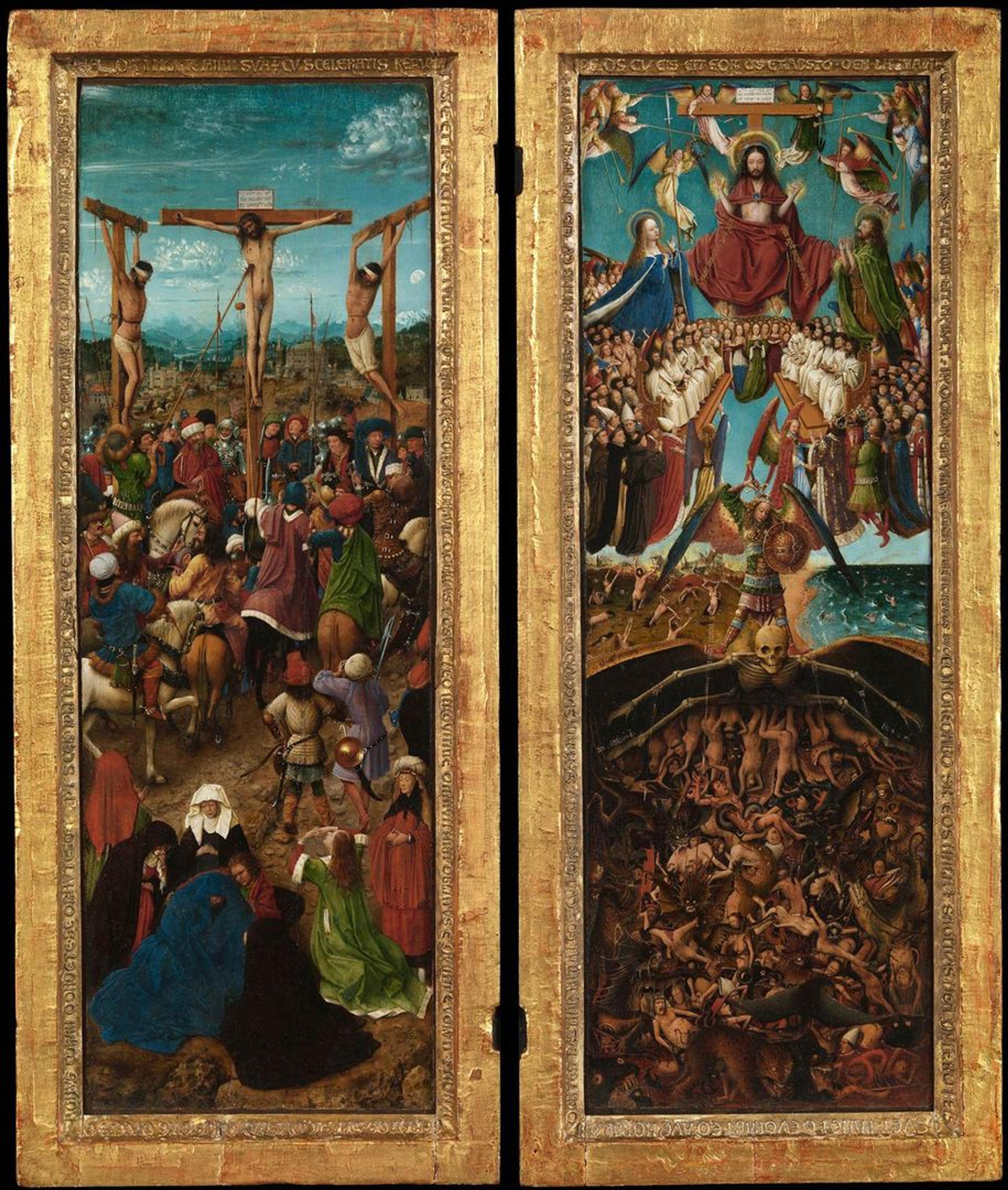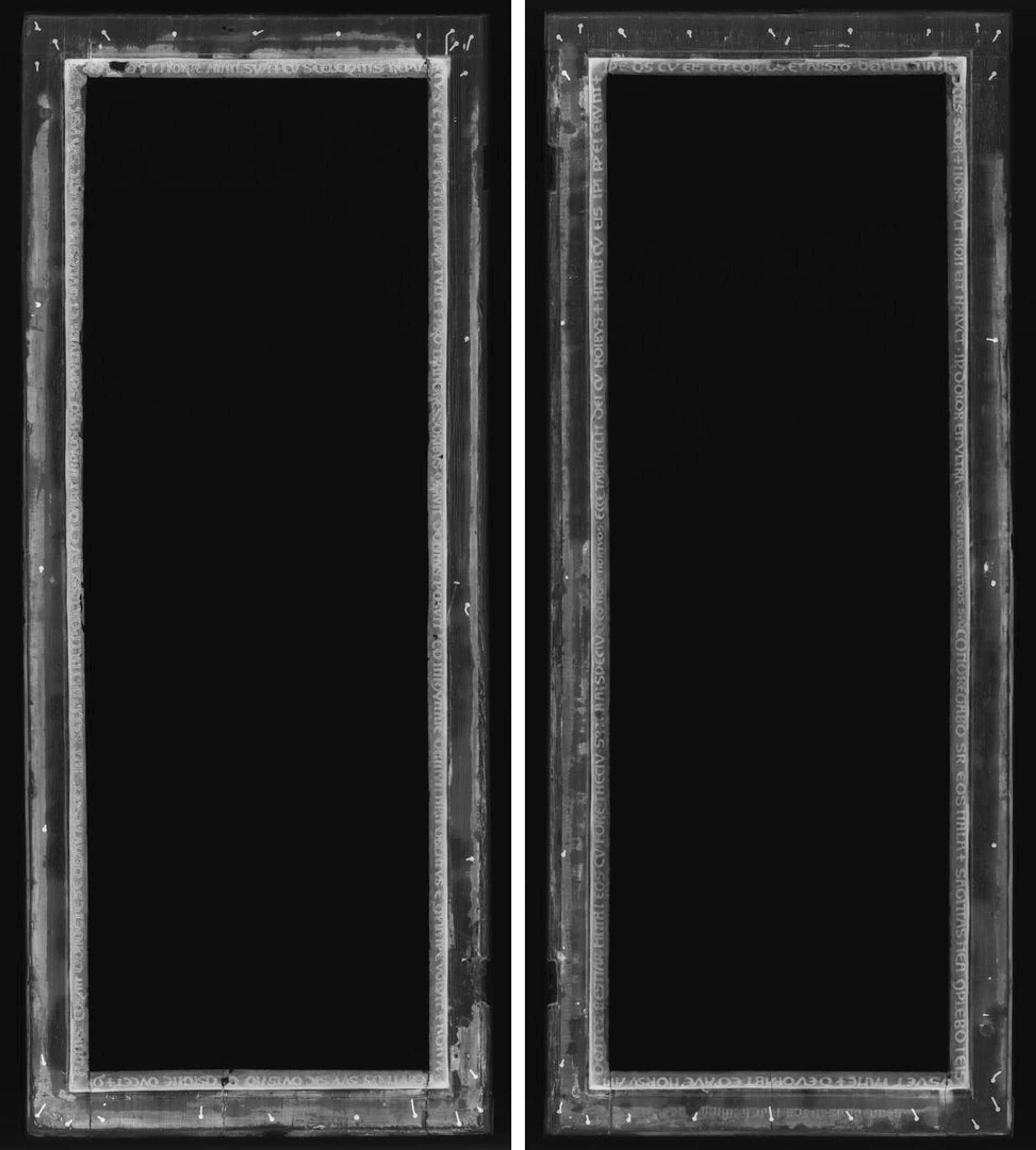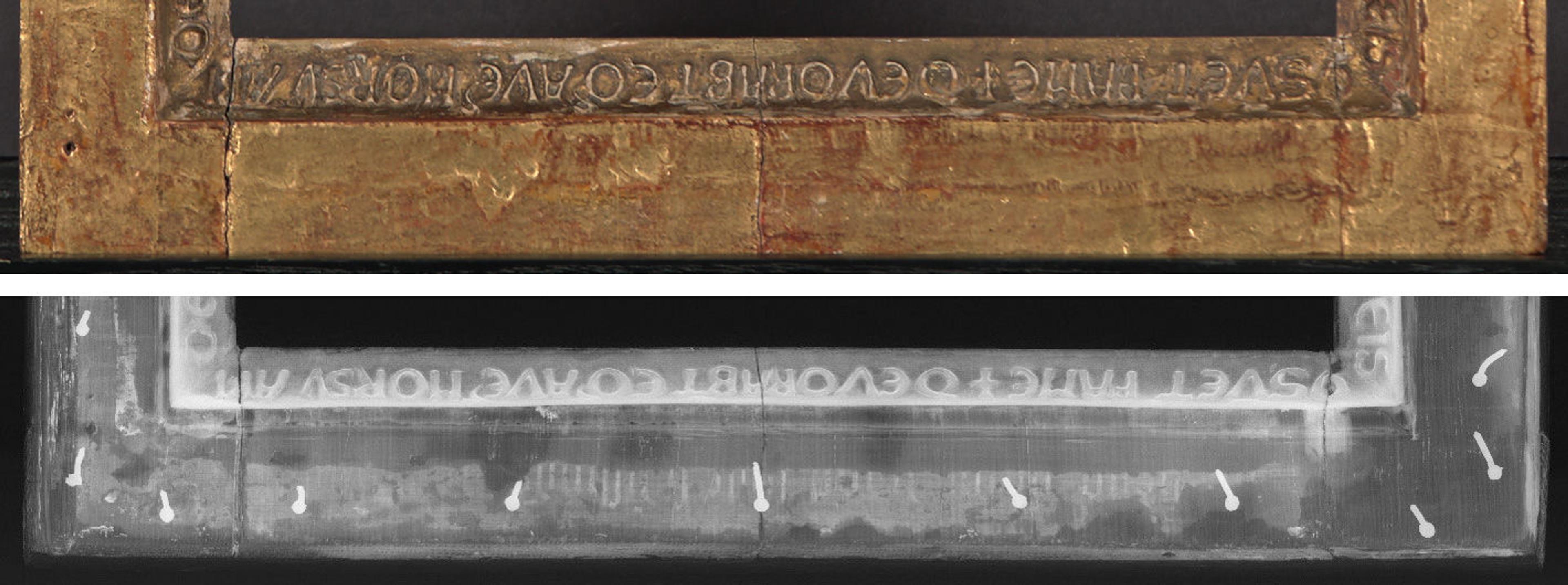Unlocking the Mysteries of Two Jan van Eyck Frames

Jan van Eyck (Netherlandish, ca. 1390–1441) and Workshop Assistant. The Crucifixion; The Last Judgment, ca. 1440–41. Oil on canvas, transferred from wood, each: 22 1/4 x 7 2/3 in. (56.5 x 19.7 cm). The Metropolitan Museum of Art, New York, Fletcher Fund, 1933 (33.92ab)
In a collection as vast and diverse as The Met's, unexpected revelations are not infrequent. Yet, imagine our surprise when in a technical investigation of two of our most treasured paintings, The Crucifixion and The Last Judgment by Jan van Eyck, we discovered a mysterious fragmentary text! Although the paintings themselves have been the subject of frequent technical study, their original frames had not. In an effort to detect evidence of hinges and other features that might explain whether the frames originally formed the components of a diptych (as has long been supposed), or the wings of a triptych, or doors to a tabernacle or reliquary shrine, we used X-radiography to begin our investigation. X-radiography of art objects reveals differences in materials: the heavier elements, such as lead, are radio-opaque and appear white in an X-radiograph.

X-radiograph images of the frames holding The Crucifixion (left) and The Last Judgment (right)
Astonishingly, the X-radiographs revealed remnants of letters and words beneath the overlying gold-colored paint applied to the flat part of the frames in a previous restoration. What could this text possibly be? And when was it written on the frame? Did it have anything to do with the gilded pastiglia lettering—a technique in which gesso is built up into three-dimensional forms—that surrounds the inner cove of the artworks' frames with Latin texts from the Old and New Testament, in verses from the Books of Isaiah, Deuteronomy, and Revelation? To add to our fascination (and our frustration), the fragments of text were incredibly difficult to read!

The lower member of The Last Judgment frame in normal light (top) and a detail of the X-radiograph showing the mysterious hidden inscription (bottom)
Clearly, next steps required the help of a paintings conservator, a conservation scientist, and a paleographer. The conservator and scientist could determine the state and condition of the gold on the frames and the question of its originality, as well as offer suggestions for further testing that could reveal more of the text and a clearer reading of it. A paleographer could then help with reading and translating the remnants of text, discovering its relationship to the Latin pastiglia, and—if possible—reconstructing what had been scraped off during previous treatment interventions.
Follow this blog series over the coming weeks to learn more about our exciting discoveries and how we began to find the answers to our questions. In next week's installment, Research Scientist Silvia A. Centeno and Paintings Conservator Sophie Scully take a deep dive into the revelatory X-radiographs of the frames.
The Crucifixion and The Last Judgment are on view at The Met Fifth Avenue in gallery 641.
Related Content
Read a selection of essays on the Heilbrunn Timeline of Art History that discuss topics related to this article: "Early Netherlandish Painting"; "Jan van Eyck (ca. 1390–1441)"; "Painting in Oil in the Low Countries and Its Spread to Southern Europe."
What's going on in The Met's Old Master galleries? View the web feature Met Masterpieces in a New Light to learn about the European Paintings Skylights Project, in which the skylights that admit natural overhead light into the galleries for optimal viewing of the collection will be replaced, in order to update and improve the quality of light in the galleries and resolve basic maintenance issues.
Maryan Ainsworth
Curator Emerita Maryan Ainsworth received her BA and MA in Art History from Oberlin College and her PhD from Yale University. A Museum staff member since 1977, she has specialized in the technical examination of paintings, initially in the Department of Paintings Conservation and subsequently as curator in European Paintings. Her publications and exhibitions include monographic studies on Bouts, Christus, David, Gossart, and Coecke van Alest, as well as the Met's early German paintings. Maryan is an adjunct professor at Barnard College, and she has been awarded the titles of Chevalier de l'Ordre de la Couronne (2001) and Chevalier de l'Ordre de Léopold (2011), bestowed by King Albert II of Belgium.